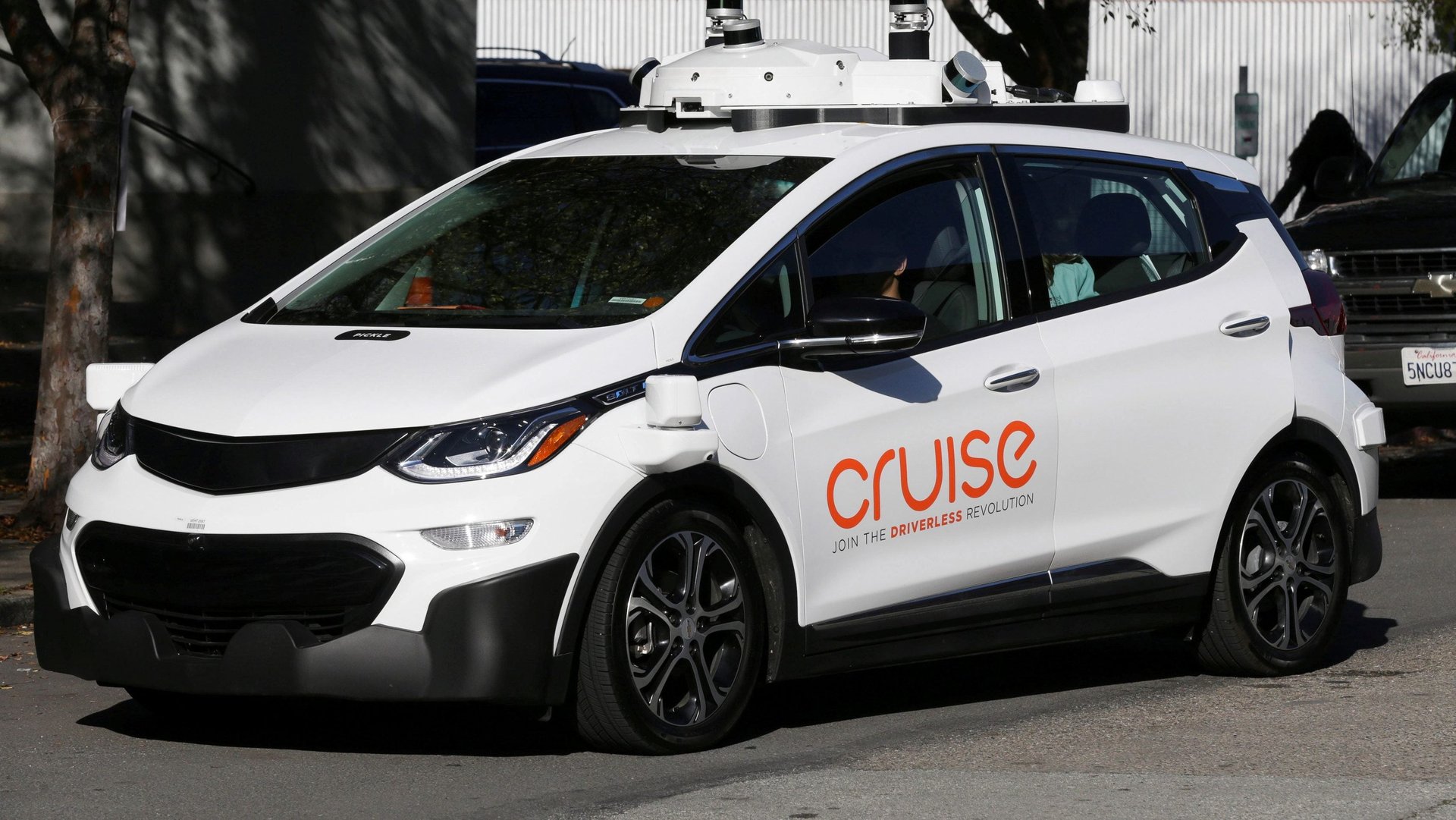Mary Barra says GM’s driverless cars will ride on public roads next year
Earlier this week, California’s Department of Motor Vehicles (DMV) issued the state’s first permit to test driverless cars on public roads, without a human back-up driver. The recipient was Waymo, Alphabet’s autonomous-driving subsidiary.


Earlier this week, California’s Department of Motor Vehicles (DMV) issued the state’s first permit to test driverless cars on public roads, without a human back-up driver. The recipient was Waymo, Alphabet’s autonomous-driving subsidiary.
Today (Nov. 1) at the New York Times’ DealBook conference in New York, General Motors chief executive Mary Barra made it clear that the iconic brand, now in a tight race with Waymo to bring the first fully autonomous car to market, did not intend to fall behind. Its driverless car, the Cruise AV (the abbreviation is for autonomous vehicle), is on track to be on public roads in geofenced areas next year, she said.
“We have also done a significant amount of work to set our safety strategy of how we’ll demonstrate that the vehicle is actually safer than a human driver,” she said.
New York Times journalist Andrew Ross Sorkin, who was interviewing Barra on stage, asked where GM will launch the fully autonomous vehicles first. “We haven’t announced that yet,” Barra said. “But we are testing in San Francisco.”
She added that the city’s steep, winding roads could initially be excluded from the geofenced area in which the Cruise will operate, but this wasn’t a given: GM believes in tackling the hardest problems first, Barra said.
“Once you are able to demonstrate that you can have autonomous vehicles safely operating in a city like San Francisco,” she added, “that really then opens up the whole market.”
Barra predicted that the Cruise will travel at about 30 miles per hour, the limit at which it can safely integrate the complex data it needs to understand what’s happening on the road.